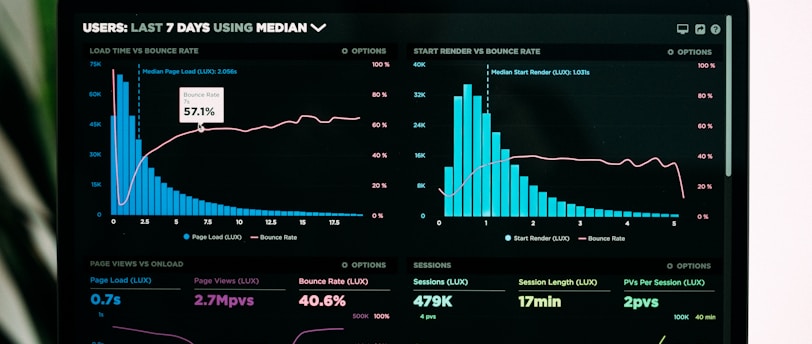Order Block Forex Strategy: Master Institutional Trading Zones
Learn the Order Block Forex Strategy used by smart money traders to identify high-probability trade setups. Discover how to trade with institutional-level precision.
TRADING EDGE


Order Block Forex Strategy: Mastering Smart Money Trading
The Forex market is dominated by large financial institutions—often referred to as “smart money.” To trade successfully, retail traders need to understand how these players move the market. One of the most powerful tools to align your trading with institutional behavior is the Order Block Forex Strategy.
In this guide, you'll learn what order blocks are, how to identify them, and how to use them to find high-probability entries and exits in the Forex market.
What Is an Order Block in Forex?
An order block is a price area where institutions (like banks and hedge funds) place large orders. These zones often precede strong price movements, acting as footprints of smart money. Order blocks are formed when the market consolidates before a significant directional move.
There are two main types of order blocks:
Bullish Order Block: The last bearish candle before a strong bullish move.
Bearish Order Block: The last bullish candle before a strong bearish move.
These areas indicate where large buy or sell orders were likely placed—and where the market might revisit to fill leftover institutional orders.
Why the Order Block Forex Strategy Works
Most retail traders rely on indicators and retail price action. Institutional traders, on the other hand, base decisions on liquidity and order flow. By focusing on order blocks, you’re essentially following in the footsteps of the big players.
Order blocks are often areas of:
High liquidity
Supply and demand imbalances
Market manipulation (stop hunts) before reversals
Recognizing these zones lets you enter the market with the trend, not against it.
How to Identify Order Blocks
Here’s a simple step-by-step method to spot order blocks:
1. Find a Strong Move
Look for large impulsive moves on the chart, especially those that break market structure (higher highs or lower lows).
2. Spot the Last Opposite Candle
Identify the last candle that went against the direction of the move. For a bullish move, it will be a red (bearish) candle; for a bearish move, a green (bullish) candle.
3. Mark the Zone
Draw a zone covering the body and wick of that last candle. This is your order block.
4. Wait for a Retest
Price often returns to the order block before continuing in the original direction. This is your potential entry point.
Key Characteristics of Valid Order Blocks
Not every opposite candle is an order block. Here are traits of high-probability ones:
Breaks structure or a key support/resistance level.
Has imbalance or fair value gap following it.
Aligns with higher time frame trend.
Occurs at major zones (e.g., previous swing highs/lows).
How to Trade the Order Block Strategy
Step 1: Multi-Timeframe Analysis
Start on the 4H or daily chart to identify strong order blocks. Then zoom into 1H or 15M to fine-tune your entry.
Step 2: Wait for Confirmation
Instead of placing a blind limit order at the zone, wait for price to react, then enter on a break of structure or candlestick pattern (like a pin bar or engulfing candle).
Step 3: Set Stop Loss
Place your stop loss just beyond the order block. This protects you from deep retests or invalidation.
Step 4: Target the Next Liquidity Zone
Use recent highs/lows, Fibonacci levels, or fair value gaps as your take-profit targets.
Example: Order Block Trade Setup
Let’s say you’re trading EUR/USD:
Price makes a strong bullish move, breaking resistance.
On the 1H chart, you spot a bearish candle before the bullish rally.
You mark that candle as your bullish order block zone.
Price revisits this zone, forms a bullish engulfing candle.
You enter long, stop loss below the zone, target the recent high.
This setup aligns with smart money concepts and provides a high-probability trade.
Common Mistakes When Using Order Blocks
Confusing regular candles with institutional zones: Not every opposite candle is an order block.
Overtrading: Only trade order blocks that are part of a clear structure break.
Ignoring confirmation: Blind entries often lead to premature stop-outs.
Using it in isolation: Combine with market structure, liquidity zones, and fundamental news.
Tools and Indicators to Help Spot Order Blocks
While order blocks can be spotted manually, some tools can make it easier:
TradingView Smart Money Concepts Indicator
ICT (Inner Circle Trader) Tools
Supply/Demand indicators
Liquidity heatmaps
Note: Tools should assist—not replace—your understanding of price action.
Order Block Strategy vs. Support and Resistance
While similar, order blocks differ from traditional support/resistance:
Understanding both can elevate your strategy.
Final Tips for Success with Order Blocks
Focus on quality over quantity—one good order block setup per week can be enough.
Journal your trades—track which types of order blocks work best for you.
Backtest your strategy—use historical data to refine your rules.
Avoid overcomplicating—keep your charts clean and strategy simple.
Conclusion: Mastering the Order Block Forex Strategy
The Order Block Forex Strategy offers traders an edge by syncing their entries with institutional activity. It combines price action, liquidity analysis, and structure breaks to give traders a roadmap for high-probability setups.
Whether you're a beginner seeking clarity or an intermediate trader looking to level up, understanding order blocks can be the game-changer in your trading journey.
Start identifying order blocks today, and you’ll begin to trade with the market movers—not against them.
Want more like this? Subscribe to the Charts Decoded newletter!
Subscribe to our newsletter
Enjoy exclusive special deals available only to our subscribers.
